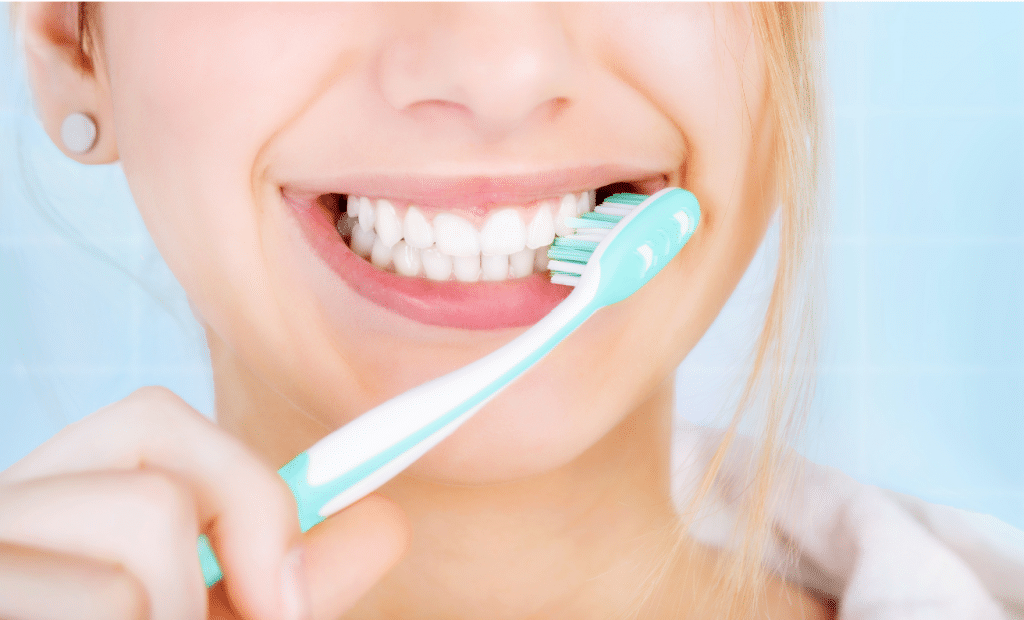
Your teeth are tough. Covered by enamel, the hardest substance in your body, your teeth can handle a lot of wear and tear. But if you allow plaque to build up and harden, you may be at risk of developing tartar.
Tartar can wreak havoc on your dental health and lead to gum disease. That’s why it’s important to know the difference between plaque and tartar, how to prevent both, and what to do if you notice buildup on your teeth.
What’s plaque?
Dental plaque is something we all have on our teeth. This soft, sticky film builds up on your teeth after bacteria mixes with saliva and food.
According to the Australian Dental Association (ADA), plaque contains more than 500 species of bacteria, some good and some not so good for your mouth.
Harmful bacteria produce acids after you eat or drink. This is especially the case when you eat or drink something sugary. These acids attack the enamel on your teeth which, according to the Office of Disease Prevention and Health Promotion, can lead to more serious issues for both your dental and overall health.
If plaque isn’t removed, it can harden on your teeth and turn into calculus, otherwise known as tartar. This buildup of plaque and tartar can cause your gums to become tender and swollen, which is an early stage of periodontal or gum disease.
To prevent plaque buildup, it’s important to:
- brush your teeth at least twice a day
- floss every day
- limit sugary foods and drinks, or brush your teeth after consuming sugary goods
- see a dentist every 6 months for a checkup and routine cleaning

How can you prevent tartar from building up?
Dental hygiene is key to preventing tartar. If you’re not following a daily protocol of brushing and flossing, plaque can sit on your teeth longer than it should.
When this happens, it combines with minerals in your saliva and eventually turns into tartar — also known as calculus.
Tartar coats the exterior of your teeth. It can also settle below your gumline. According to the Centers for Disease Control and Prevention (CDC), this can make it
Once tartar spreads below the gumline, a dentist or dental health professional will need to remove it to prevent periodontal disease.
Periodontal disease, in its early stage, is called gingivitis. Symptoms of gingivitis include gums that are swollen, red, and possibly bleeding.
If left untreated, it can progress and become periodontitis. When this happens, your gums may pull away from your teeth. It may also cause your teeth to loosen. In more advanced cases, your teeth may fall out.
According to the CDC, close to
Although tartar and plaque can both cause dental health problems, there are some key differences to point out.
The buildup process is different
Plaque builds up on your teeth throughout the day after eating or drinking, especially after you’ve eaten carbohydrates or sugary foods or beverages.
We all deal with plaque. If you adhere to a daily brushing and flossing routine, you can remove the plaque on your teeth before it hardens and turns to tartar.
If plaque is left to accumulate on your teeth, it hardens and becomes tartar.
The appearance is different
Plaque is described as having a fuzzy feeling when you rub your tongue across your teeth. It’s generally colorless, which makes it hard to see.
Tartar may feel rough and have a yellow or brown appearance.
The removal process is different
Plaque can be removed from your teeth with daily brushing and flossing. Tartar on the other hand needs to be removed by a dental professional.
How can you prevent tartar from building up?
The best way to stop tartar from building up is to get rid of plaque on your teeth. Plaque can harden into tartar in a matter of hours. That’s why it’s so important to have a daily dental hygiene routine that includes regular brushing and flossing.
-
To fight plaque and prevent tartar, the ADA recommends the following steps.
- Commit to brushing your teeth twice a day. Brush your teeth twice daily with an anti-plaque toothpaste that also contains fluoride. Aim for 2 minutes of brushing twice per day. For better removal of plaque, consider changing to an electric toothbrush. According to a
2013 study , a powered toothbrush may be more effective at removing plaque than a manual toothbrush. - Floss at least once a day. The ADA stresses the importance of cleaning between your teeth to remove plaque and help prevent cavities or gum disease, especially in areas where a toothbrush can’t reach.
- Check your snacks. To help prevent plaque and tartar buildup, limit sugary snacks and beverages. If you do eat or drink something sweet, try to brush and floss your teeth soon afterward.
- Get regular dental checkups and professional cleanings. The only way to remove tartar is by getting a dental cleaning with a dental professional. Try to aim for a checkup and dental cleaning every 6 months. If you have gum disease, your dentist may recommend other treatments.
- Consider sealants. If you’re prone to getting cavities, you may want to talk with your dentist about dental sealants. This is a thin coating that can be applied to your molars. According to the CDC, sealants may help protect your teeth against 80 percent of cavities for 2 years and may continue to prevent 50 percent of cavities for up to 4 years.
- Commit to brushing your teeth twice a day. Brush your teeth twice daily with an anti-plaque toothpaste that also contains fluoride. Aim for 2 minutes of brushing twice per day. For better removal of plaque, consider changing to an electric toothbrush. According to a
Talk To Us
Plaque buildup that sits for too long can cause tartar to form on your teeth. This can destroy your tooth enamel and increase your risk of gum disease.
The good news? By following a daily routine of brushing, flossing, and twice-yearly visits to the dentist, you can limit plaque buildup and reduce the risk of tartar forming on your teeth and gums.
If you have any questions about how to control plaque or tartar buildup, schedule an appointment with a dental health professional.
To book an appointment or find out more, call Morgan Street Dental Centre today on 02 69219500!
